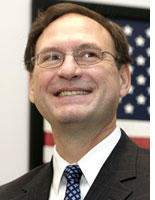p>
Remove a musical patriarch from his homegrown scene and what happens? In the case of the North Mississippi hill country, the death of beloved bluesman R.L. Burnside has spurred his offspring into action.
“After a number of false starts, the North Mississippi blues scene is finally starting to coalesce a bit,” says music writer Scott Barretta, who moved to Oxford in 1999.
“In one sense, it’s disappointing that R.L. is no longer part of the action, but it’s also exciting to see all the new bands that have gotten their act together,” Barretta says.
Burnside Exploration, formed by R.L.’s son Garry Burnside and his grandson Cedric Burnside, has two new albums on the way. Duwayne Burnside, another son, is touring with his group the Mississippi Mafia on the strength of his debut studio release, Under Pressure. And Kenny Brown, R.L.’s “white son” and longtime guitarist, continues to soldier on as a solo artist.
“We’ve been into blues all our life,” Garry Burnside says. “Whatever we do is gonna be considered ‘hill country’ because this is where we’re from. But we’re the new generation. We like rap and all kinds of music.”
Last March, Burnside Exploration entered Jimbo Mathus’ Delta Recording Studio in Clarksdale, Mississippi, to record an album for B.C. Records, the label behind Under Pressure. That record, says Cedric, should be released next month. In the meantime, the group cut 10 more tracks at Justin Showah’s Electric Catfish studio in Oxford, which they hope to release on a local label early next year.
“Most of those songs are originals,” Cedric says. “I write about my life, my kids, and everyday things. I try to stick to the truth.”
Just 27 years old, he recalls growing up without a radio or a TV. “My granddad used to play out on the porch, and we’d have house parties every weekend. Johnny Woods would come over and blow harmonica, and he’d drink two or three gallons of corn liquor. We just stomped up dirt.”
A few years later, Cedric explains, the family purchased a radio, and the younger generation of Burnsides was exposed to hip-hop artists like LL Cool J and Run-D.M.C. — artists who influenced his younger brother Cody, an aspiring rapper.
Despite the death of his grandfather, who passed away in September, Cedric maintains that 2005 has been a good year. He was cast in Craig Brewer’s upcoming flick Black Snake Moan, and in October, Burnside Exploration opened for perennial jam-band faves Widespread Panic at Mud Island. More recently, they’ve performed at festivals in Ocean Springs, Mississippi, and for sold-out crowds at the Buccaneer in Midtown Memphis.
“We have to live,” Cedric says, “and we have to take care of our family. The best way I know to make money is by making music.” This Sunday, December 4th, Burnside Exploration will perform at the Buccaneer.
Duwayne Burnside, meanwhile, has eschewed his hill-country roots for a more modern soul-blues sound. Nevertheless, Duwayne’s Albert King-derived guitar technique, which comes through loud and clear on songs like R.L.’s “Bad Luck City,” is well worth checking out.
Over the last few years, many of the Burnside musicians have collaborated with Senegalese guitarist Guelel Kumba, who relocated to Oxford in 2001.
“When Guelel came here, most of the people he was playing with didn’t know about African music,” says Barretta, who teaches an “Anthropology of the Blues” course at the University of Mississippi and hosts a blues-oriented radio show, Highway 61, on Mississippi Public Radio. “Guelel himself recognized the similarities between Senegalese music and the hill-country music. He developed a band, Afrissippi, via informal gigs in Oxford.”
Showah, the group’s bassist, recorded Afrissippi at Mathus’ Clarksdale studio in mid-2004 then fine-tuned some songs at his own home studio. Released in late October, the band’s Fulani Journey is currently available online (go to ElectricCatfishRecords.com for ordering info).
A perfect marriage of Senegalese folk music and droning, primitive hill-country blues, Fulani Journey is a natural extension of earlier concept albums like Othar Turner’s Senegal to Senatobia, released on Birdman Records in ’99.
“Guelel didn’t have any preconceptions about Mississippi. In fact, he had no idea there were so many cultural connections between Senegal and the hill country,” Showah says. “But everyone in Oxford has responded to his music, and he’s developed a friendship with the town itself.”
“Playing with Guelel isn’t hard, and it isn’t easy,” says Garry Burnside. “It’s just different. I’ve learned a lot of stuff by just hanging out with him and listening.”
“While the scene [in north Mississippi] has changed dramatically,” Barretta says, “it’s difficult to make an assessment. Things look like they’re happening, but they aren’t, or vice versa. You can’t judge these musicians in terms of career trajectories, because they’ll constantly surprise you.”

